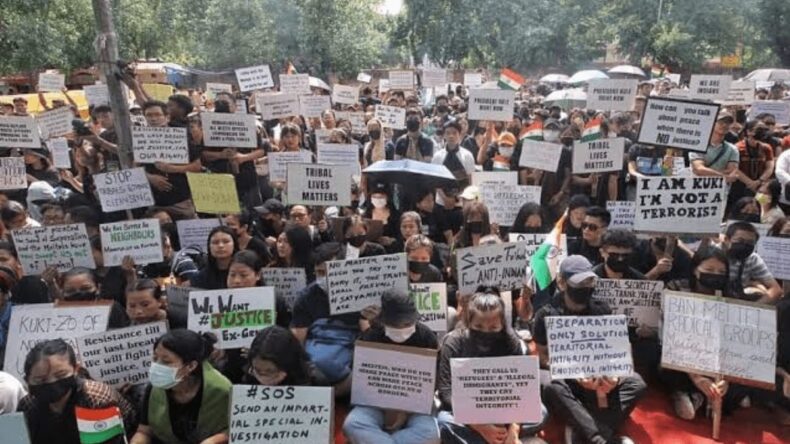
The remote northeastern state of Manipur, India, has been grappling with a harrowing episode of ethnic violence that has left at least 150 people dead and numerous others displaced. The historic fault lines between tribal groups have once again erupted into chaos, triggering clashes and sparking tensions that threaten to engulf the region in a protracted battle. As Prime Minister Narendra Modi faces a no-confidence motion in parliament over his perceived inaction, the violence raises questions about the underlying causes and the government’s response.
Historical Fault Lines: Meitei-Kuki Divide
The roots of the conflict lie in the longstanding animosity between Manipur’s Meitei majority and the Kuki-Zo, a prominent tribal group constituting around 16 per cent of the state’s population. The Meitei, predominantly Hindu, reside primarily in the capital city of Imphal and its adjoining prosperous valley. In contrast, the mainly Christian Kuki-Zo inhabit scattered settlements in the hills, setting the stage for geographic and cultural divisions.
The Spark: Scheduled Tribe Status
The recent violence was ignited by simmering tensions over the proposed recognition of the Meitei as a Scheduled Tribe (ST). This special status, already conferred upon the Kuki, would provide Meiteis with affirmative action privileges, including quotas for government jobs and college admissions. The move sparked fears among Kuki-Zo groups that their entitlements would be compromised, leading to protests that rapidly escalated into violence.
Chaos Unleashed: Looting and Displacement
The eruption of clashes was accompanied by widespread chaos. Mobs looted police stations, resulting in the theft of approximately 3,000 weapons and 600,000 rounds of ammunition. The state’s ethnic fault lines deepened as rival Meitei and Kuki-Zo militias established blockades, further isolating communities. The toll of the violence is staggering – over 150 lives lost, thousands displaced, and countless homes and places of worship targeted in reprisal attacks.
The Complex History of Manipur
Manipur has a history steeped in ethnic tensions and separatist movements. The state has been a hotbed of conflict between Bangladesh, China, and Myanmar, with different ethnic groups vying for recognition and autonomy. The late 1970s saw an armed rebellion against Indian rule by Manipuri rebels who decried neglect from the central government. Decades of armed attacks on government facilities followed, leaving thousands dead and leaving scars that remain.
Government Response: A Mixed Bag
Despite federal troops being deployed and curfews and internet shutdowns enforced, sporadic violence continues to plague Manipur. Home Minister Amit Shah’s visit aimed to reclaim looted weapons and promise an impartial investigation. Modi’s initial silence drew criticism, but he eventually spoke out, condemning a graphic incident that sparked public outrage. However, Human Rights Watch has accused the state authorities of perpetuating the conflict through divisive policies.
Debating Inaction: Modi’s No-Confidence Motion
As the nation watches, Modi faces a parliamentary no-confidence motion over his government’s perceived failure to quell the violence. Critics argue that his inaction and delayed response have exacerbated the crisis. Yet, with Modi’s Bharatiya Janata Party (BJP) holding a clear majority, the outcome of the motion appears predetermined.
Seeking Resolution Amidst Turmoil
The ethnic violence in Manipur sheds light on the complex web of historical grievances, territorial disputes, and political manoeuvring that continue to impact the region. As debates rage in the halls of parliament and communities grapple with the aftermath of violence, the urgent need for reconciliation and sustainable solutions becomes increasingly evident. The wounds of Manipur serve as a stark reminder of the delicate balance that must be struck to ensure the harmonious coexistence of diverse communities.












